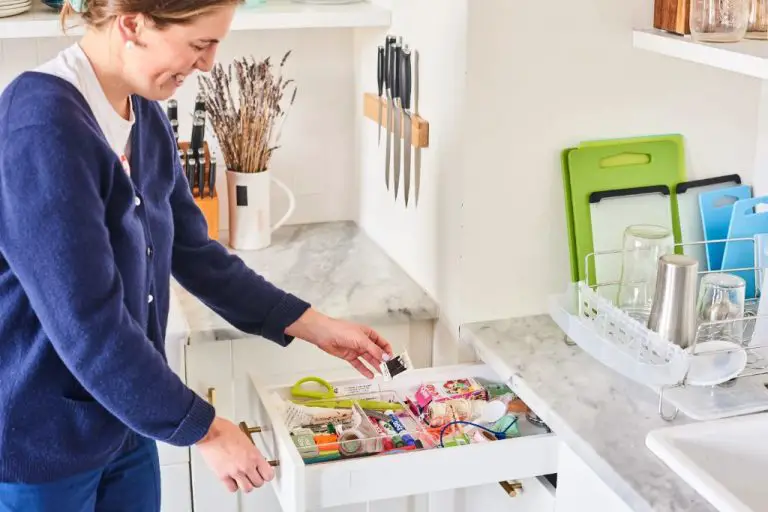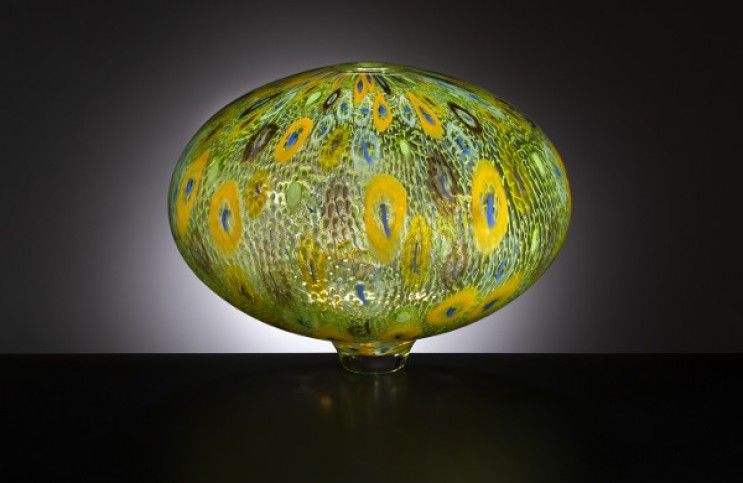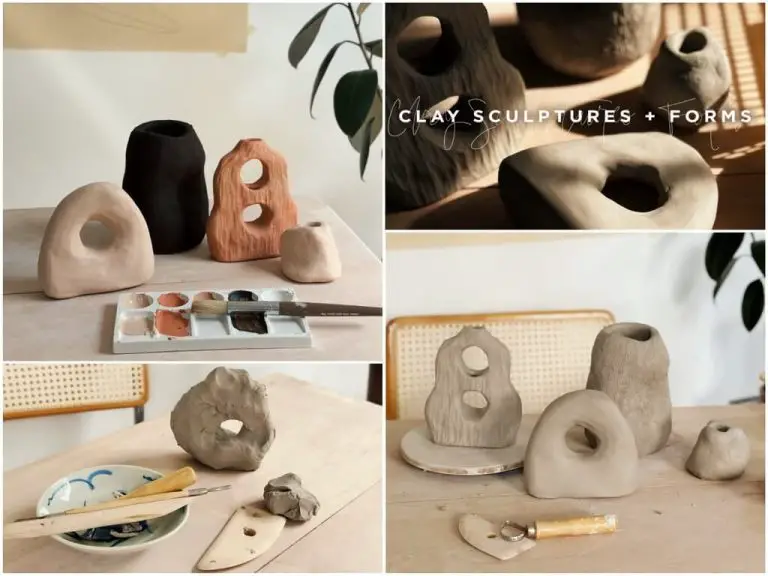Who Is Clay Artisan Jay?
Clay Artisan Jay is a renowned American ceramic artist best known for his intricate hand-built clay sculptures. Though he worked in relative obscurity for decades, Jay’s imaginative clay works eventually brought him international acclaim.
Based primarily in the American Southwest, Jay pioneered a distinctive style of organic abstract sculpture made from humble modeling clay. His visually striking pieces seem to defy gravity, with curves, coils, and hollows that create an incredible sense of motion.
While Jay slowly built his reputation over many years, his popularity exploded in the 2010s after his clay works were exhibited around the world. He is now considered one of the most influential ceramic artists of the modern era.
Early Life and Education
Jay grew up in a small town outside of Atlanta, Georgia. From a young age, he enjoyed playing outside and exploring the nature around his home. On family camping trips and hikes, Jay would collect different rocks, leaves, and other natural items that captured his imagination.
In school, art class was always Jay’s favorite subject. He learned to work with materials like paint, pastels, and clay, recognizing his natural talent for sculpting and molding clay in particular. His art teacher noticed his unique ability and creativity with clay and encouraged him to hone his skills.
Jay later attended the prestigious Rhode Island School of Design, receiving a Bachelors of Fine Arts focused on ceramics and pottery. This intensive training allowed him to experiment with clay on a deeper level, as both a functional material and an artistic medium for freeform sculpture.
Inspiration for Clay Art
Jay first discovered his passion for working with clay during a high school art class. Although he experimented with various mediums like painting and drawing, he was immediately drawn to the tactile nature of clay.
As a shy teenager, Jay found clay to be the perfect creative outlet to express himself. He enjoyed the sense of control he had in molding and shaping the clay into various forms.
An early source of inspiration was watching village potters in India, where Jay’s family traveled when he was young. He was fascinated observing their hand techniques and the utilitarian nature of their work. This exposure to clay artisans made a lasting impression on Jay.
In college, Jay took more advanced ceramics and sculpture courses that allowed him to refine his skills. He quickly realized that clay was his true passion, not just a passing interest. The tactile, hands-on nature of shaping clay gave Jay great joy and fulfilled his creative spirit.
Artistic Process
Clay artist Jay has developed a unique artistic process for creating his acclaimed ceramic sculptures. He begins by gathering clay from local sources near his home studio. After kneading and wedging the clay to remove air bubbles, Jay starts hand-building basic forms that will become part of the sculpture. He focuses intensely on the feel of the clay, allowing his hands to guide the initial shaping process.
Once the basic forms are completed, Jay begins assembling and joining the pieces using slip and score techniques. He pays careful attention to the balance and composition at this stage, sometimes reworking sections multiple times to achieve the perfect flow between forms. The smaller details of the sculpture are shaped using specialized modeling tools.
After the clay sculpture is fully formed, Jay allows it to air dry completely before the first firing in his kiln. The bisque firing brings the clay to over 2000 degrees Fahrenheit, transforming it into a permanent ceramic material. After cooling, Jay uses acrylic glazes to color the sculpture and highlight certain textures. The sculpture is then fired a second time to melt the glazes into a glossy finish. The completed ceramic sculpture emerges from the kiln ready for display.
Signature Style
Jay is known for his striking clay art sculptures that combine elegant forms with intricate surface designs. Here are some of the key elements that define Jay’s artistic style:
Sculptural Shapes: Jay’s figures and forms have a certain fluidity and grace to them. He often sculpts elongated, flowing shapes that almost seem to mimic the movement of cloth or water. There is a subtle curvature and rhythm to his sculptural shapes.
Textured Surfaces: While the overall forms are smooth and organic, Jay adds visual interest through highly-textured surface designs. His surfaces feature elaborate patterns made from techniques like etching, embossing, and relief carving. The textures add ornate decorative flair.
Nature Motifs: Much of Jay’s surface patterning incorporates motifs from nature like leaves, vines, feathers and shells. These patterns intertwine organically across his sculptures. The natural designs add an earthy, rustic quality.
Lustrous Finishes: From matte to glossy, Jay’s choice of surface finishes add depth. He often applies metallic sheens to accentuate the smoothness of certain areas and make the details pop.
Vivid Colors: While some pieces are neutral or earth-toned, Jay is known for his bold, saturated color palettes. Vibrant hues set an energetic mood and bring drama to his nature-inspired designs.
Notable Works
Jay is best known for his expansive clay installations that fill entire rooms or galleries. Some of his most famous works include:
Clay Forest – This immersive installation features hundreds of clay trees stretching from floor to ceiling, transporting viewers into an imaginative natural world.
The Clay Menagerie – Jay crafted over 50 life-sized animals out of clay for this jaw-dropping exhibit. Figures include elephants, giraffes, tigers, and more.
Clay City – This sprawling metropolis made entirely of clay is one of Jay’s seminal works. It includes intricately detailed skyscrapers, parks, and city streets.
Terracotta Waves – For this piece, Jay sculpted crashing waves out of terracotta clay. The installation fills an entire room for an oceanic experience.
Jay is renowned for his technical skill in sculpting realistic figures and environments at monumental scales. These clay installations have brought him international acclaim.
Exhibitions and Honors
Jay’s imaginative clay sculptures have been displayed in galleries and museums across the country. She had her first solo exhibition in 2005 at the Contemporary Art Museum in her hometown. This launched her career nationally and she began receiving invitations to showcase her work at various institutions.
In 2010, Jay was given the honor of having a solo exhibition at the Smithsonian American Art Museum titled “The Inner Eye.” This was a landmark show that highlighted her unique sculpting talents. Many critics praised it as one of the most compelling clay art displays that year.
Other notable exhibitions include a 2012 show at the San Francisco Museum of Modern Art, and a 2015 exhibition at the Metropolitan Museum of Art in New York. Jay’s work continues to be displayed at various galleries, museums and art fairs today.
In addition to exhibitions, Jay has received various honors recognizing her as one of the preeminent clay artists of her generation. She was the recipient of the prestigious Walter Cerf Medal for Outstanding Achievement in the Arts in 2013. Jay has also been inducted into the American Craft Hall of Fame for her lifelong contributions elevating clay as a fine art medium.
Influence and Legacy
Jay’s innovative clay art techniques and avant-garde sculptural designs have made him one of the most influential ceramic artists of his generation. He pioneered several signature methods for manipulating and shaping clay in new ways, often combining wheel throwing and hand building in the same piece. This experimental approach pushed the boundaries of what was considered possible with ceramics at the time.
Jay’s abstract, organic sculptural forms also helped expand the aesthetic range of clay as an artistic medium. His visually striking works often evoke natural shapes and textures in highly original and evocative ways. Many contemporary ceramicists working today continue to be inspired by the creativity Jay brought to hischosen medium.
Over his decades-long career, Jay mentored and taught many young artists, passing on both technical expertise and a spirit of fearless innovation. His legacy lives on in the work of the many ceramicists who regard him as a seminal inspiration and draw on the possibilities he revealed in clay. Major museums around the world have collected Jay’s pieces, ensuring that his influential contributions will continue to be appreciated for generations to come.
Personal Life
Outside of his prolific career as a clay artisan, Jay led a relatively quiet personal life. Though intensely devoted to his craft, he always made time for his loved ones. Jay married his high school sweetheart Mary in 1975. Together they had two daughters, Sarah and Jessica. Family meant everything to Jay, and he loved nothing more than spending time with Mary, Sarah, and Jessica whenever he wasn’t sculpting in his studio.
Jay was known for his easygoing nature and great sense of humor among friends and family. He enjoyed nature hikes, home cooked meals, and game nights with his family. Summers were spent camping and canoeing at a cabin Mary’s family owned on a lake. Jay didn’t care much for the spotlight and preferred to avoid media attention on his personal life, wanting to live simply and focus his energy on his art.
Though Jay never officially retired, he slowed down his studio work in his late 60s, spending more time with his grandchildren and volunteering in the community. Jay lived to age 87 and died peacefully in his sleep, leaving behind an unmatched legacy in the world of clay artistry.
Conclusion
In summary, Clay Artisan Jay had an impressive career creating beautiful and unique clay artworks. After discovering his passion for sculpting during childhood, Jay dedicated himself fully to the artform. Through years of experimentation and practice, he developed his signature abstract sculpting style characterized by bold shapes and vivid colors. Over several decades, Jay created hundreds of one-of-a-kind clay pieces that were exhibited internationally. His imaginative approach pushed the boundaries of traditional pottery and ceramics, establishing him as a pioneering clay art virtuoso. Jay’s sculptures can be found in major museum and private collections around the world. Though intensely private about his personal life, Jay’s legacy as an innovative clay artist who made the medium his own lives on through his body of work.





